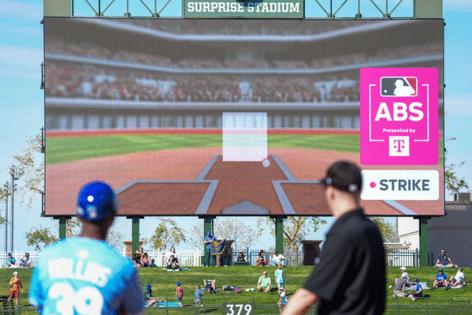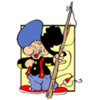Robots are closing in! MLB to use Automated Ball-Strike challenge system during All-Star Game.
Published in Baseball
The MLB All-Star Game has served disparate purposes over the years. It always has been a showcase for baseball's top talent. Once upon a time, the outcome determined home-field advantage in the World Series. In recent years, it has been a fashion runway for ridiculous uniforms.
This year, it will be an incubator.
The Automated Ball-Strike (ABS) Challenge System will take its next measured step toward regular-season implementation when it is used in the All-Star Game on Tuesday in Atlanta.
Just as ABS was conducted during spring training, each team will get two challenges that can be made only by the pitcher, catcher or batter. Successful challenges are retained.
The player making a challenge taps his cap or helmet to let the plate umpire know that his ball or strike call will be reviewed. The ubiquitous Hawk-Eye system tracks the trajectory and location of the pitch and and a graphic of the pitch is displayed on the scoreboard while the call is being reviewed.
In the minor leagues, ABS has been tested since 2021 and the ABS challenge was implemented in 2022. Major leaguers got their first taste during spring training.
Result? Not much difference from the calls made by human umpires. Strikeouts were reduced slightly and walks increased a tick.
"We have made a lot of progress in the way the system works," MLB vice president of on-field strategy Joe Martinez said at a media-demonstration session during spring training, "and also the way we weave the system into the game play. And we're at a point in Triple-A where we have a system that the players like, the coaches like, the umpires like and the fans like."
The shape of a major league strike zone as called by umpires isn't the precise cube seen on television but takes a rounded form that bulges wider in the middle of the zone and tightens at the top and bottom.
Human umpires continue to improve, in no small part because pitch tracking puts every call under a microscope. MLB umpires have improved their accuracy in calling balls and strikes every year since pitch tracking technology was introduced in 2008, according to FanGraphs. Accuracy has spiked from 81.3% to 92.4%. Expressed another way, incorrect calls have been reduced by nearly 60% in 15 years.
Major League Baseball negotiated a change with the umpires association last offseason in how home-plate umpires are evaluated, effectively tightening the strike zone. The change decreased the margin of error for umpires in their evaluations, resulting in fewer called strikes off the edges of the plate.
Still, a handful of calls are missed in nearly every game, and the All-Stars will have an opportunity to tap their caps and challenge at least two calls per team. Should the experiment be a hit with participants and fans, the next step will be for the 11-person MLB competition committee to consider implementing the challenge system for the 2026 regular season.
All-Star notes
— All-Stars will wear what they wear during regular-season games, meaning those unsightly uniforms that were uniformly panned by players and fans the last several years will remain in a closet somewhere. This will be the first year since 2019 that players wear the regular-season uniforms of their teams.
— Department of serendipity: The All-Star Game will take place on Tuesday (7/15) in Atlanta, the number and location of Hank Aaron's historic home run in 1974 that vaulted him past Babe Ruth to become MLB's all-time leader at the time. Hammerin' Hank blasted No. 715 off the Dodgers' Al Downing at Atlanta-Fulton County Stadium. The tribute will re-create the moment through the use of projection mapping and custom pyrotechnics at the end of the sixth inning.
— MLB All-Star week begins Saturday with the Futures Game. The MLB draft will be held Sunday, the Home Run Derby is scheduled for Monday with the All-Star Game taking place Tuesday.
©2025 Los Angeles Times. Visit latimes.com. Distributed by Tribune Content Agency, LLC.







Comments